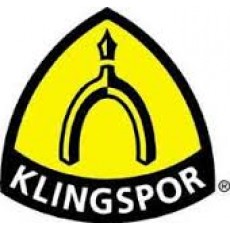
Picking the correct sandpaper
If you have not worked much with wood and have not had much use for sandpaper in the past, you probably think that there isn’t much to it. You know that you would use it to smooth edges after a cut, and you may have been told to sand between coats of paint, but when you head out to buy some, you might be faced with more kinds than you could have imagined.
Which one do you need? What is the right kind for the job?
There’re a few things that you should know, such as the right size of sandpaper grit and the appropriate coarseness, so let’s take a look at the options available to you.
Sizing the Grit
Sandpaper is made up of fine particles known as grains, or grit, that have been bonded to either paper, or some other type of material with adhesive. Knowing the grit size that you need is important because not every project will need the same.
The grit is marked on the sandpaper with a numerical value, such as 100-grit. The higher the number, the smaller the grains would be, while lower numbers indicate coarser sandpaper.
The Right Coarseness
In an effort to make choosing the appropriate coarseness easier, manufacturers will describe it in words as opposed to just numbers. Your projects may call for a specific level of coarseness, so it is wise to know the range of grit that each level includes.
• Extra Coarse sandpaper in the 16 to 36 grit range is made to handle the toughest jobs, such as sanding old floors. It should only be used only where a large amount of stock removal is desired.
• Coarse sandpaper in the 40 to 50 grit range is useful for the rough shaping of wood, or the removal of old finishes.
• Medium sandpaper in the 60 to 100 grit range can be used for final shaping. Primary sanding on rough wood is also an appropriate use.
• Fine sandpaper ranges from 120 to 220 grit and is good for the final sanding before finishing the work.
• Extra fine sandpaper is often used between coats of paint or varnish. Grit between 240 and 400 are considered very fine, and superfine sheets up to a 600 exist as well, often being used for polishing jobs.
Grit Material
The coarseness of the sandpaper is not the only consideration to keep in mind. The type of abrasive material is also quite important. Some types of grit grain work best with specific materials. Some examples of materials are:
• Garnet. This is a natural grain that in most applications has been replaced with the more durable Aluminum Oxide below. Garnet is still preferred by some for fine sanding of wood.
• Aluminum oxide. This highly durable synthetic abrasive works well in a wide variety of applications. Great for hard and soft woods and also works well for a wide range of metals. This is the most universal abrasive material available.
• Silicon carbide. Harder than Aluminum Oxide, think of this grain as similar to slate or shale rock, very hard and “friable” which means the material cracks easily to expose new sharp cutting edges. Popular uses for silicon carbide are fine finishing in wood and metal applications and also it is the “go to” material for glass and plastic finishing.
• Zirconia. This man-made material is designed for tough applications where heat and high pressure are too much for materials like aluminum oxide. Available in grits ranging from 24 to 120 grit, this material is more for removal than it is for “finishing”. Most commonly used in hard steel applications, it also works well for rough sanding in hardwoods.
• Ceramic. The newest and hardest grain to be used in sanding products. Ceramic abrasives work best in the toughest applications. Whether it is extremely hard wood or exotic metals, this grain will get you the finish you need when other grains fail to make the grade. Extreme performance and life expectancy are what this grain will deliver to you.
As you can see, there is a lot to consider with sandpaper, and this is just scratching the surface, so to speak. But no matter what your specific needs are, you can count on Klingspor, the leader in sanding products since 1893!

 Posted by
Posted by


